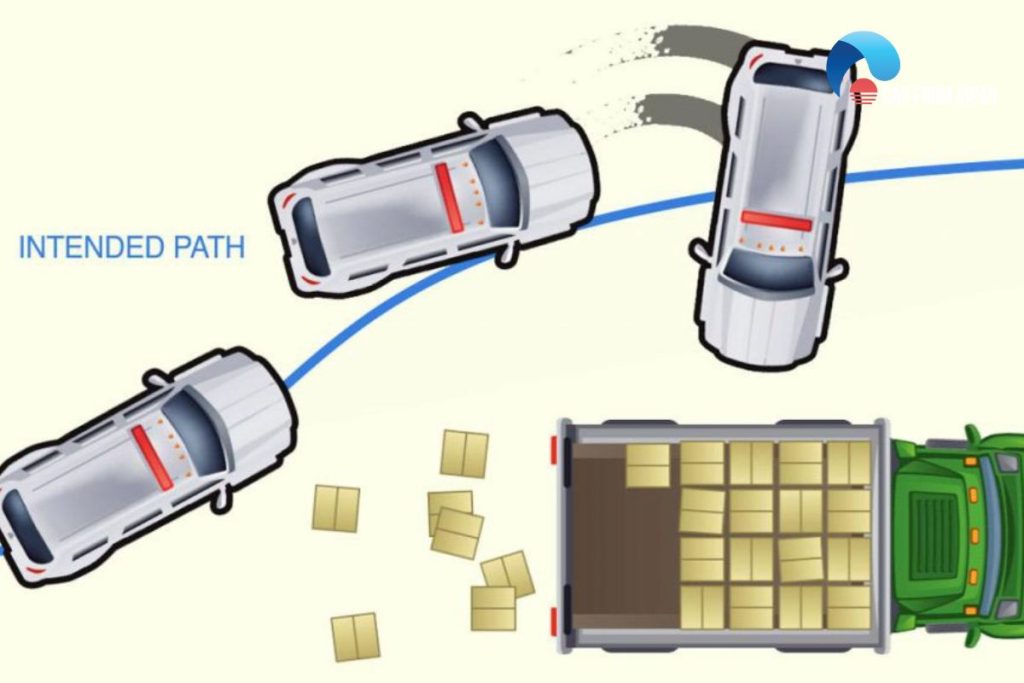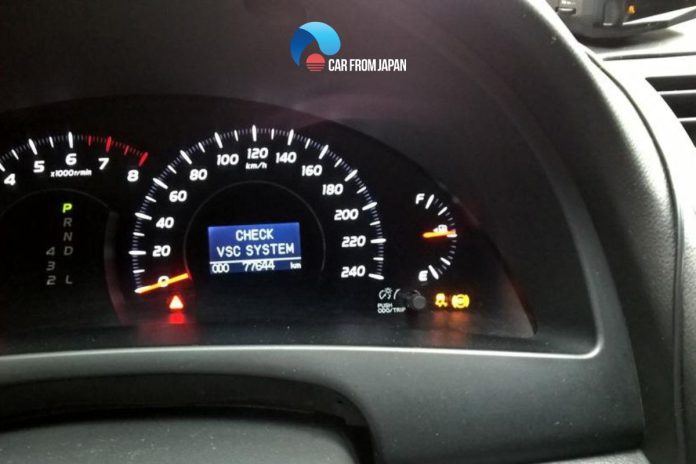The vehicle stability control (VSC) system helps with the traction of a vehicle in harsh climatic conditions.
It works with the anti-lock braking system (ABS) to prevent the car from sliding by applying brakes on all wheels to stop the car from skidding further.
The check VSC system light comes on when there is a problem with the VSC or ABS.
Contents
How Does The VSC System Work?
The VSC light is directly related to the VSC system. This VSC monitors and controls a vehicle’s steering stability. It steps right in when a car starts losing traction.
It automatically applies the brakes on the wheels and reduces the engine power so the car becomes stable and the driver gets better control of the car. During this process, the VSC system works with the ABS to maintain the vehicle’s stability.
What’s the mechanism behind this action? Each of the wheels has an electrical sensor that communicates with the Powertrain Control Module (PCM) regarding the conditions of the stability and steering performance in bad weather.
The performance factors include the wheel’s rotation speed and the vehicle’s horizontal and vertical motion.
The sensors get the information when there is an issue with traction. They then relay the information to the computer or electronic control units (ECUs).
The ECUs analyze the information to determine the action needed to control the car’s traction with the VSC and ABS.
Any issue with the traction and steering stability of the vehicle will trigger the check VSC system light. The VSC system helps a driver to control the vehicle during emergency cornering, skidding, and understeering.
A great number of road accidents happen because the drivers lose control of the car in treacherous conditions such as rain, snow, fog, and on slippery, muddy roads. This system reduces the risk of these accidents to a great extent.

What Triggers The Check VSC System Light?
The VSC warning light on your dashboard indicates several issues related to traction. It could be a faulty steering angle sensor, malfunctioning wheel speed sensors, or a defective rotation speed sensor.
A bad steering rack could also be the culprit. So, it’s important to check the VSC and ABS components when the check VSC system light comes on.
In some cases, the light comes on because it needs reprogramming. This is a simple problem that you can solve without breaking a sweat.
When you are driving in severe weather such as a blizzard, the snow can prompt the light since the ABS sensors misinterpret the snowy surface as a traction-losing condition. This can also trigger a ‘C1201’ engine error code.
Undoing the error code is a simple task. Go to a safe place or in your garage and wait for the snow to melt.
The light is likely to turn off automatically after the thawing. But if it does not work, use an OBD2 scanner to fix the error code. Take the car to a repair shop if you don’t know how to use the scanner.
There is another process too. Turn the ignition switch to ACC (for accessories) and press the odometer until it shows mileage.
Switch the engine off and then switch on again using the odometer button. This will make the check VSC system light go away.
If the light stays on or returns after a while, the car may have bad sensors or the steering rack mentioned above.
You should consult a mechanic for this problem and replace the sensors or components, as required.
Other Helpful Systems For Traction Control
There are a couple of other systems that work alongside VSC and ABS to maintain proper traction when low friction occurs.
Electronic Stability Control (ESC) System
Toyota introduced this system in the 90s, which assesses the resistance between the wheels and the road. It works automatically and steps in whenever the vehicle’s control needs to be regained.
This technology provides impressive performance on a variety of slippery grounds. You can rely on it when driving on slippery roads and frozen water bodies.

Acceleration Slip Regulation (ASR) System
Another accident-reducing technology used with the VSC system is ASR. It works in collaboration with the electronic accelerator and ABS system.
It sends signals to the ECUs when any tire loses traction during driving the car. The computer takes action by reducing power to the wheels so they cannot skid further.
Dynamic Stability Control (DSC) System
DSC is another system that does a wonderful job of keeping a car stable on the road. It is automatically activated depending on the friction between the tires and the ground.
This system works by enhancing the traction of some wheels and letting others slip.
How To Prevent Check VSC System Light Come On?
Maintain tire pressure and condition
Uneven tire pressures or worn tires can trigger the VSC system. Regularly check your tire pressure and ensure they are inflated to the recommended levels.
Also, inspect your tires for excessive wear, damage, or uneven tread wear, and replace them as needed.
Brake system maintenance
The VSC system works in conjunction with your brakes.
Regular brake inspections, timely pad and rotor replacements, and brake fluid flushes are crucial for preventing VSC-related problems.
Steering system check-ups
The VSC system relies on input from the steering angle sensor.
Be sure to make steering system inspections to identify potential problems with the sensor or other steering components that could trigger the VSC light.
Wheel alignment and balancing
Proper wheel alignment and balancing ensure that your wheels are tracking straight and rotating smoothly.
Alignment and balancing contribute to a more stable and controlled driving experience, reducing the likelihood of VSC issues.
Address warning lights promptly
Don’t ignore any warning lights on your dashboard, including the check engine light, ABS light, or traction control light.
Addressing warning lights promptly can prevent cascading issues and keep your VSC system functioning correctly.
Watch this video from proclaimliberty2000 to learn how to fix the check VSC system!
FAQs on Check VSC System Light
Is it safe to drive with VSC lights on?
Generally, it’s quite safe to drive your car when the VSC light turns on.
However, as we know the main function of this system is to control and maintain the stability of your vehicle.
In some cases, driving with the VSC light turning on can affect the stability control system, so you still need to get your car fixed in these situations.
Typically, the VSC off button is located on the center console or dashboard, near the driver’s side.
It may be labeled as “VSC Off, just above your knees, or close to the gear lever.
To activate the VSC (Vehicle Stability System) you just need to hold the VSC button for a few seconds.
The TRAC OFF and VSC OFF lights will illuminate when both systems are off.
Can I reset the “Check VSC System” light myself?
Yes, in some situations, you may be able to temporarily reset the “Check VSC System” light by disconnecting the vehicle’s battery for a few minutes.
However, this is not a permanent solution, as the light will likely come back on if the underlying issue is not addressed.
Why did my VSC light come on after replacing the battery?
Battery disconnection can reset or confuse ECU-related systems. If the steering angle sensor or yaw sensor loses calibration, the VSC may throw a fault until it’s re-learned.
Final Words
A Check VSC System light illuminates when the system detects a potential problem, urging you to take action.
Remember, don’t delay! Addressing the VSC System light promptly is an investment in your peace of mind and well-being on the road.
For more insightful Car Maintenane Tips, follow Car From Japan today!



